Tourism in Hikone
Sight-seeing in Hikone
When visiting Hikone, whether it is your first time or tenth, there are several places that are highly recommended to see. The first site, one of Japan's national treasures, is Hikone Castle. Here you will be able to learn about Hikone's history while enjoying the scenery around the castle grounds. Also in the same area, there is a museum full of artifacts and materials used during the Tokugawa period. There are also severeal temples and shrines within Hikone's boundaries that add to its rich culture. In addition, there is a place near the castle called "Old New Town". There you will be able to enjoy a variety of Japanese style foods and shops. Among these sites, there is always Lake Biwa, where people come from great distances to enjoy its beauty.
Tourism Information
Hikone Castle
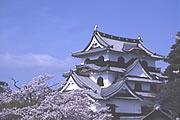
Hikone Castle is one of four castles in Japan designated as National Treasures. It was built by Naotaka Ii, the second lord of Hikone, after the Battle of Sekigahara in 1600. The main building is three stories high, and stands magnificently on top of a hill. Sub-buildings surround the main castle structure, two of which, Tenbin-turret and Taikomon-turret, are registered as National Important Cultural Assets. Hikone Castle is admired year-round for its landscape and season beauty.
Open: 8:30 AM - 5:00 PM
Fee (including the Genkyu-en Garden): adults 800yen, elementary and junior high students 200 yen.
Genkyu-en Garden
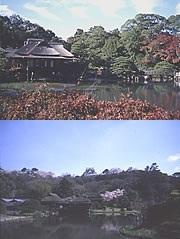
Genkyu-en Garden was built by Naooki Ii, the fourth lord of Hikone. It was modeled after the villa of Emperor Genso, a ruler during China's Tang Period. A beautiful view of Hikone Castle and its surrounding hills is visible from the garden, making it one of the best spots to visit around the Castle area, especially in the autumn.
Open: 8:30 AM - 5:00 PM
Fee (including Hikone Castle): adults 800 yen, elementary and junior high students 200 yen.
Hikone Castle Museum
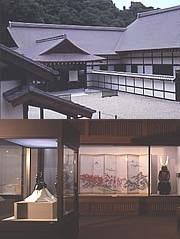
This museum contains about 45,000 art pieces and old manuscripts which were made and used by the Ii family. The City of Hikone rebuilt the building that houses this museum, originally buit during the Edo period.
Open: 8:30 AM - 5:00 PM(last admission 30 minutes before closing time)
Fee: adults 500 yen, elementary and junior high students 250 yen.
Yume-Kyobashi Castle Road
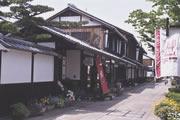
Castle Road and the buildings along it were built in an "Old-New Town" style, meaning that people can enjoy a modern downtown atmosphere in the environment of a traditional Japanese style town. The many souvenir shops and restaurants made of wood create a traditional Japanese atmosphere.
Yume-Kyobashi Akari-Kan
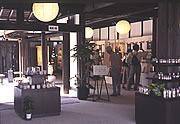
Yume-Kyobashi Akari-Kan is a candle shop that also offers the opportunity to learn this traditional craft. Historically, many candles were made in Hikone.
Open: 9:30 AM - 5:30 PM
Closed Tuesdays (except national holidays, in which case the shop will close the following day)
Haiyu-Kan
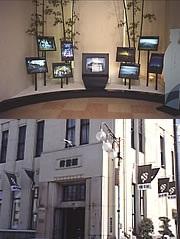
A Haiyu-Kan is a place where one can see an exhibition of Haiku, or traditional Japanese poems. Within walking distance from Castle Road, this building was originally a bank during the Taisho Period.
Open: 9:00 AM - 5:00 PM
Closed Tuesdays (except national holidays, in which case the shop will close the following day) and during the period from December 29th to January 3rd.
Umoreginoya
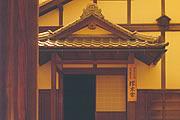
This was the home of Naosuke Ii, who was said to be the "father of the opening of Japan". He lived here from age seventeen to age thirty-two. Naosuke Ii was the 14th son of Naonaka Ii, Hikone Clan's 11th lord, so his chances of becoming lord were quite slim. However, he made a strong effort to study both culture and military skills, and later became not only a lord, but also the prime minister of the Tokugawa administration during the Edo Period. He is responsible for opening Japan up to the outside world.
Open: 9:00 AM - 5:00 PM(last admission 30 minutes before closing time)
Closed Mondays(except national holidays, in which case the shop will close the following day) , from December 20th to the end of February.
Fee: adults 300 yen, high school students and college students 200 yen, elementary and junior high students 100 yen.
Ryotanji Temple
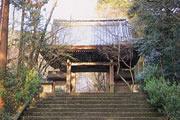
Ryotanji Temple is located on the side of Sawayama Hill. This temple is know as an Ii Family temple, and includes a tea ceremony room used by Naosuke Ii. Famous door paintings by the artist Kyoroku Morikawa, an excellent student of Basho Matsuo, can also be admired here. Ryotanji Temple is also famous for its Japanese garden "Fudaraku no Niwa".
Open: 9:00 AM - 5:00 PM (Mid-November to the end of February until 4:00 PM)




更新日:2024年09月02日